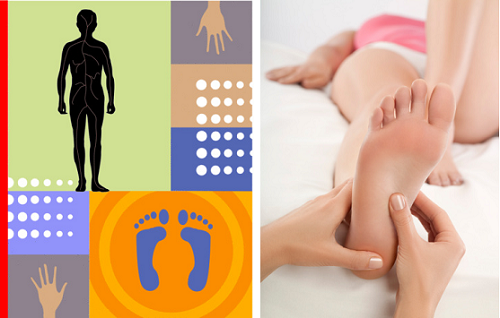Oct 15, 2025
Oct 15, 2025

Reflexology is a "touch therapy" with its ancient origins based on the idea that pressure applied to the foot can prevent and treat organic disease. The basic philosophy behind reflexology had roots in the Taoist Chinese view of the life force Ch'i (Ying and Yang), and the concept of chakras in the Hindu practice of Yoga (Triple Helix, pp 4-5, Autumn 2003).
The Chinese probably used a comparable therapy some 5000 years back, through which accupressure emerged followed by accupuncture. Ancient paintings on the foot of the Hindu God Vishnu, and inscriptions on the foot of the reclining Budhha suggest a representation of "reflex points". A wall picture and hieroglyphics on the tomb of Ankhamahor (probably a royal physician), excavated from Saggara in Egypt and dated c2000 BC, convincingly depicts hand and foot touch therapy.
The Florentine sculptor Cellini (1500-1553) relieved pain using finger pressure.
An American ENT surgeon William Fitzgerald (1872-1942) applied clamps and elastic bands to fingers in order to produce jaw anaesthesia to perform minor operations.
He devised a theory that the body was pided into ten vertical zones or slices ending in the fingers and toes on each side. Later Eunice Ingham (1879-1974) in 1930 prepared detailed maps of "reflex areas" representing all parts of the body on the hands and feet (Wills P. Reflexology and Colour Therapy, Element Books, London, 1998).
Any significant anatomical or physiological relationship between the various body organs and the geometric vertical segments or 'reflex areas' on the foot or hands is not clearly evident. Wills (1998) stipulates that reflexology (accupressure and massage) applied to hands and feet removes and dissipates energy blocks, breaks down crystalline structures, encourages toxin release, stimulates the immune system, and prevents ill health. Energy is transmitted to the patient through the hands of the therapist by application of pressure. Thus, massage and pressure techniques are applied to the hands and feet to unblock energy channels, stimulate vital organs, and promote healing (Kenyon, KE, Accupressure use for Common Diseases, Arco Publishing Inc., New York, 1974).
Among other alternative therapies (kineseology, aromatherapy, biofeedback, chiropractic, enzyme therapy, magnetic-field therapy, therapeutic touch, naturopathic medicine, and herbal medicine) reflexology is more popular and safe. It provides an alternative method for relief of pain and other ailments. Properly applied accupressure claims to relieve complaints like arthritis, body aches, headache, mmigraine, haemorrhoids, menstrual cramps, impotence, frigidity, bed wetting, backaches, constipation, hypertension, anxiety, asthma, sore throat, and sinus problems.
Images (c) Gettyimages.com
08-Nov-2012
More by : Dr. Frank S. K. Barar